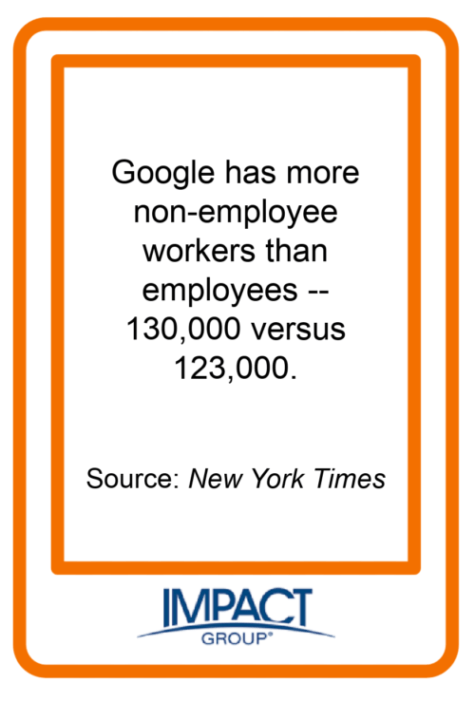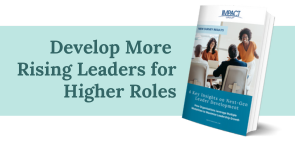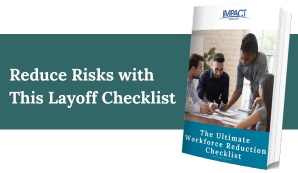Trying to determine which role is best for your open position – independent contractor vs. employee? The Biden Administration recently nullified a rule that would have made it easier to classify “gig economy” workers as independent contractors. Under federal law, having workers classified as employees, rather than contractors means workers are covered by federal minimum-wage and overtime laws. And many have greater access to employer-sponsored health plans.
In April 2021, Labor Secretary Marty Walsh told The Wall Street Journal he’s seen an increase in employers who misclassify gig workers as independent contractors to reduce labor costs and take away protections (like subsidized healthcare, time off, minimum wage, and overtime) from workers.
How to Decide – Contractor vs. Employee?
The debate over contractor vs. employee determines taxation rules. According to the US Internal Revenue Service, someone is an independent contractor if the payer has the right to control or direct only the result of the work, not what will be done and how it will be done. Other determining factors include performance evaluation, training, and longevity.
- Evaluation: Systems that generate process metrics as the work is done or that track how the work is done point to an employee. Evaluation systems measuring just the end result may indicate an independent contractor vs. an employee.
- Training: If the payer invests to develop skills relevant to job performance – or conducts periodic or ongoing training about procedures and methods – the worker likely to be viewed as an employee. Independent contractors ordinarily use their own methods.
- Longevity: According to the IRS, “An expectation that the relationship will continue indefinitely, rather than for a specific project or period, is generally seen as evidence that the intent was to create an employer-employee relationship.”
Regulatory Issues Associated with Misclassification
Labor laws were enacted to provide basic protections to workers. Employers expose themselves to legal risk when they circumvent such laws. But it’s not just businesses like Uber, Lyft, or Door Dash that are impacted by the Department of Labor’s recent decision. Many organizations are being scrutinized when it comes to the misclassification of an independent contractor vs. employee.
According to Jessica Looman, principal deputy administrator for the Labor Department’s Wage and Hour Division, the department recently took action against a business that misclassified 70 home-health aides as independent contractors. In another case, a restaurant knowingly misclassified dishwashers as independent contractors.
The Rise of “Talent on Demand” in the Gig Economy
 Employers must align costs with market demand. In an economic downturn, businesses seek to maintain profitability by scaling back on all costs – including labor. The appeal of a liquid workforce that can be adjusted with the turn of a spigot captures the imagination of many business leaders. And thus, in the years since the Great Recession, we’ve seen an increase in contractors – and the rise of the Gig Economy.
Employers must align costs with market demand. In an economic downturn, businesses seek to maintain profitability by scaling back on all costs – including labor. The appeal of a liquid workforce that can be adjusted with the turn of a spigot captures the imagination of many business leaders. And thus, in the years since the Great Recession, we’ve seen an increase in contractors – and the rise of the Gig Economy.
About one-third of those working in US corporations today lack employee status – and access to employer-paid healthcare and other benefits. When we think of the gig economy and contractors, we often think of Uber/Lyft drivers, artists, and online marketplace sellers. However, non-employee contractors also include on-call workers, contingent and part-time workers, consultants, skilled contractors, and seasonal workers.
As an example, Google has more non-employee workers (contractors and temps) than employees – 130,000 versus 123,000 – according to Daisuke Wakabayashi’s 2020 reporting for The New York Times.
Gig Economy Risks for Workers
According to Jessica Looman, principal deputy administrator for the Labor Department’s Wage and Hour Division, “Misclassification of employees as independent contractors presents one of the most serious problems facing workers today.”
According to the Economic Policy Institute, Uber drivers earn the equivalent of $9.21 in hourly wages—less than what is earned by 90% of all other wage and salary earners, and below the minimum wage in 13 of the 20 major urban markets where Uber operates.
Perhaps the worker’s biggest risk to themselves and their families is going without healthcare. In fact, according to a report by New School and the University of California Berkeley, “Forty percent of drivers have incomes so low they qualify for Medicaid and another 16% have no health insurance; 18% qualify for federal supplemental nutrition assistance.”
Additionally, gig workers are often required to purchase their own equipment (computer hardware, software, licenses, vehicles, insurance, and other tools). They also have to set up their own retirement savings plan (with no employer match). And they must pay a higher tax rate because they incur both the employer and employee portion of their payroll tax each quarter.
Gig Economy Risks for Employers
Employers often overlook the risks they incur by relying too heavily on contract or gig labor. Not all contract workers are low-paid, but even highly paid contractors may suffer from the lack of benefits such as paid time off and subsidized health insurance. Businesses that offer compensation so low that it qualifies their workers for government subsidies (for food, housing, or healthcare), are often pegged as lacking a socially conscious or “freeloading” at the expense of taxpayers.
And in the final analysis, some experts question if the business savings and other outcomes warrant the use of contract labor. Writing in the October 2020 issue of the Harvard Business Review, Professor Peter Capelli notes, “My research and that of others has shown that using agency workers alongside employees has negative effects on the permanent staff, weakening loyalty and relationships with peers and lowers operational performance.”
Inequities may give rise to a lack of cooperative spirit on a team of workers comprising both full-time employees and contractors. Imagine the attitude of the contractor who may feel stretched to pay for his own payroll taxes and healthcare costs. A contractor, with no paid time off, maybe working alongside a colleague who gets weeks of paid time off each year and even eight weeks of paid paternity or maternity leave. It’s easy to anticipate a level of resentment if these workers perform similar jobs.
In Capelli’s view, contractors lack a strong psychological or legal obligation to look out for the company’s best interests in the way they might if they were employed. Capelli also cites: “Research shows that contractors often stay with clients just as long as regular employees do … If they leave, their knowledge and information go with them.”
Will Your Business Thrive by Employing Gig Workers?
Why the issue? When it comes to maintaining an engaged workforce, employing workers without strong socioeconomic safeguards can be a detriment. Someone who’s worried about the sustainability of their income or incurring a healthcare crisis without insurance may suffer from debilitating anxiety or even depression.
Consider the data supplied by the American Psychiatric Association that, “employees with unresolved depression experience a 35% reduction in productivity, contributing to a loss to the U.S. economy of $210.5 billion a year in absenteeism, reduced productivity, and medical costs.”
According to the report on the Economic Well-Being of US Households from 2018, of those doing gig work as a primary income source, 58% would have difficulty handling an unexpected expense of $400. And Edison Research found that out of those doing gig work for their primary source of income, 80% of gig employees say an unexpected expense of $1,000 would be difficult to pay.
Independent Contractor vs. Employee: Why it Matters to Your Business
While entrepreneurialism and gig work now account for one-third of those working for US corporations, gainful employment is essential to a healthy economy. Years of research suggest that people need gainful employment – not just for their own well-being – but to be productive.
In his 2011 book, “The Coming Job Wars,” Jim Clifton summarizes data from the Gallup World Poll, a survey of more than 1.7 million people from 164 countries. The poll asks a standard set of questions to classify people as either thriving, struggling, or suffering. Gainful employment is the determining factor.
“Those who have ‘good jobs’ – who are employed by an employer and work for that employer at least 30 hours per week – are likely to be thriving. Those who are employed part-time and unemployed are less likely to be thriving. The self-employed lag behind and are the least likely to be thriving.”
More recently, social scientists have looked to the Gallup World Poll, to determine the income level associated with optimal emotional well-being: It’s between $60,000 and $75,000 a year. Other research finds that people are happiest when they make about $75,000 a year.
Will Your Business Thrive if Workers Struggle?
It makes good business sense to hire thriving vs. struggling workers. To avoid the high cost of absenteeism and poor performance, employers should ensure employees are – at a minimum – paid a living wage so that they are not subject to undue stress and anxiety. Additionally, employers who are paid a living wage don’t need to rely on government subsidies, sparing the employer from social stigma and brand erosion.
Gainful employment – whether workers are classified as independent contractors or employees – benefits both employers and workers. Financial woes affect a worker’s performance and sense of well-being. Those feelings contribute to morale and ultimately your company’s growth.
Whether you work as a contractor or an employee, or perhaps you’re looking to get back into the working world in a different way, partnering with a coach will help you find your next opportunity faster. Explore career coaching programs now.









